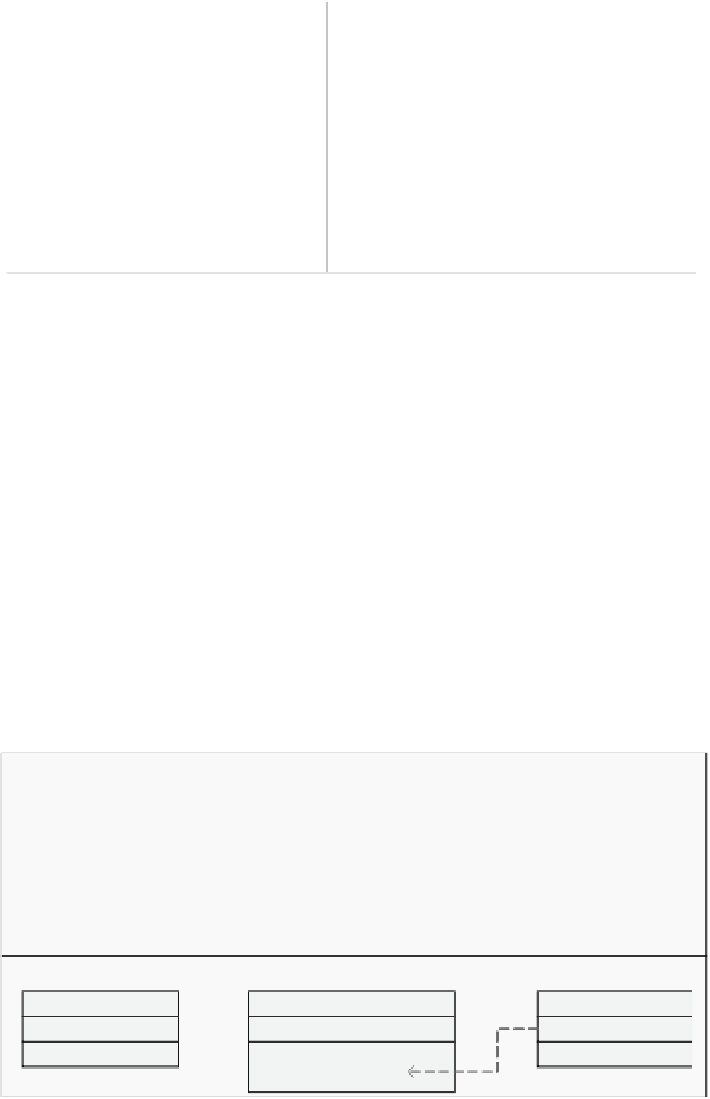Information Technology Reference
In-Depth Information
Ta b l e 3
OO-method requirements metamodel and integration metamodel mappings
OO-method req.
element
OO-method req.
element
I.M. element
I.M. element
Node
Node
Resource
Resource
.model
.model
.kind
.kind
.name
.name
.providedBy
.providedBy.task
.boundary
.boundary
.requiredBy
.requiredBy.task
OOmReqModel
OOmReqModel
.producedBy
.producedBy
.name
.name
Task
Task
.ownedNode
.ownedNode
.provides
.provides.resource
Actor
Actor
.requires
.requires.resource
.element
.element
2. The mapping between the MDD requirement metamodel and the Integration
Metamodel. Table
3
shows the mapping obtained for the linking example.
Finally, the OO-Method class model presented in Fig.
12
is obtained from the
example
i
∗
model that is extended with the generated UML profile. In the extended
produced by the task
To Present Work Request
.
The generation of the OO-Method class model is performed by means of model-
to-model transformation rules that are defined according to the interchange proposal
occurs for the resource
Work Request
since it is a physical entity. The agent
relationships are also represented to indicate the permissions that the classes
CandidateEmployee
and
Employer
(generated from the corresponding
i
∗
actors)
<<Actor>>
Extended Example i* Model
<<Actor>>
Candidate
Employee
Employer
kind = physical
producedBy = To Present Work Request
A Work
Request to
be Processed
Work
Opportunity
<<Task>>
<<RequiresLink>>
<<ProvidesLink>>
<<Resource>>
<<Task>>
To Present
Work Request
To Process
Work Request
Work
Request
Generated OO-Method Class Model
CandidateEmployee
WorkRequest
Employer
<agent>
<agent>
<new> createInstance()
<new> toPresentWorkRequest()
toProcessWorkRequest()
<new> createInstance()
Fig. 12
Extended example i
∗
model and the OO-method class model generated









Search WWH ::

Custom Search